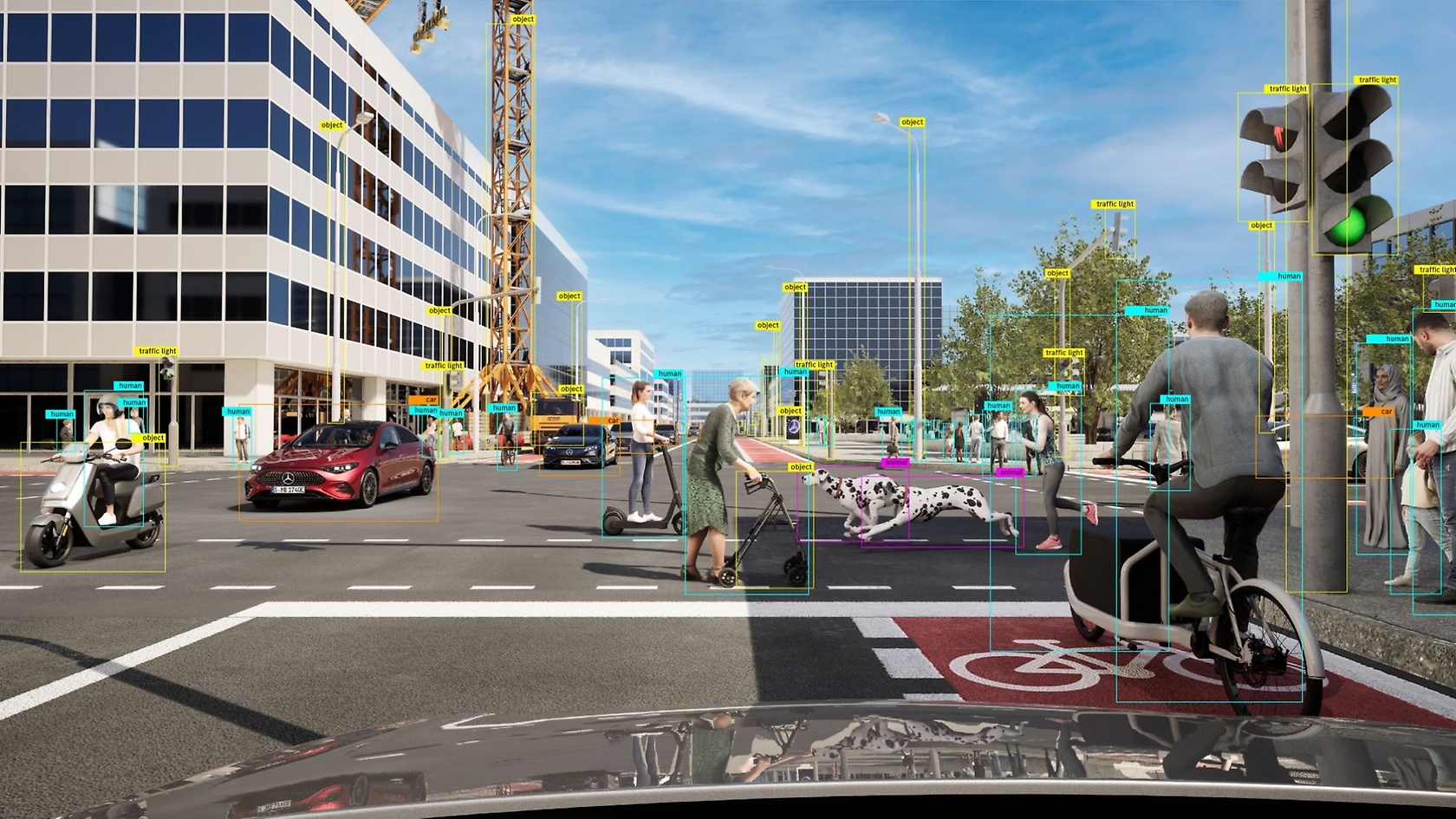July 16, 2025 – Mercedes-Benz develops its driver assistance systems and automated driving functions with a clear objective: greater road safety for all road users. Video data play a key role here.
,xPosition=0,yPosition=0.4)
Driving assistance and active safety systems
Mercedes-Benz AG
Mercedesstraße 120
70372 Stuttgart
Germany
Phone: +49 7 11 17-0
E-Mail: dialog@mercedes-benz.com
Please send queries about content on this website to any contact. You can address your concerns to us in English and your respective national language.
Represented by the Board of Management:
Ola Källenius, Chairman; Jörg Burzer, Mathias Geisen, Olaf Schick, Michael Schiebe, Britta Seeger, Oliver Thöne, Harald Wilhelm
Chairman of the Supervisory Board: Martin Brudermüller
Court of Registry: Stuttgart; commercial register no. 762873
VAT ID: DE 32 12 81 763
All information about our products can be found on your country-specific Mercedes-Benz product page.
,xPosition=0,yPosition=0.4)
Driving assistance and active safety systems
July 16, 2025 – Mercedes-Benz develops its driver assistance systems and automated driving functions with a clear objective: greater road safety for all road users. Video data play a key role here.
Whether on foot, in a wheelchair, on a bike or in a car - very different people meet in road traffic. Modern driver assistance systems can help to ensure that everyone reaches their destination safely. They can also provide noticeable relief in everyday life: Modern systems provide situational support for speed adaptation, distance control, steering and lane changes.
For driver assistance systems and automated driving functions to work reliably, they must recognise the surroundings precisely. What seems intuitive to us is complex for a machine - it must learn it. And this is only possible if it has “seen” it beforehand - or has been trained accordingly.
Until now, only test vehicles have provided the necessary sensor, image and video data at Mercedes-Benz to train the AI. But that is no longer enough: To map traffic scenarios more comprehensively, Mercedes-Benz is expanding the database to include real-life driving situations from the customer fleet - provided that the vehicle owners explicitly agree to the data usage.
The data are not stored in their entirety, but rather on a location- or event-related basis. This means only in the event of predefined safety-relevant events - such as heavy braking manoeuvres or potentially dangerous situations. The short sequences also make it possible to include rare or complex traffic situations in the system development, such as encounters with more unusual or rare road users like horse-drawn carriages, e-scooters or emergency vehicles that sometimes drive through red lights.
This also includes special environmental conditions or temporary traffic routing such as pop-up cycle paths. The aim is to further develop the systems so that they recognise all road users reliably and comparably well - not just frequent or statistically dominant groups.
A high degree of responsibility goes hand in hand with the data utilisation. That is why Mercedes-Benz favours privacy by design: Data protection and data security have a high priority at Mercedes-Benz and are already integrated into system development. The used data are usually anonymised and separated from the vehicle identification number.
Trust is created through transparency, which is why Mercedes-Benz actively provides information about how it handles data.
By expanding the data basis, Mercedes-Benz is contributing to further improving road safety - not only for vehicle occupants, but for everyone travelling in public spaces. This is because intelligent driver assistance systems can save lives by recognising hazards more quickly and intervening earlier. The more realistically they are trained, the more reliable they are in everyday life.
An additional benefit is that potential danger points in road traffic can be identified. The knowledge gained from this not only flows into the further development of automated systems but can also provide impetus for an improved transport infrastructure.
Mercedes-Benz customers decide whether they wish to provide their vehicle data and can rescind this decision at any time.
Road users who have potentially been recorded can contact Mercedes-Benz, stating the time and place, and request that any recordings be deleted.
Mercedes‑Benz AG
R&D
Mercedesstraße 120
70372 Stuttgart
Germany